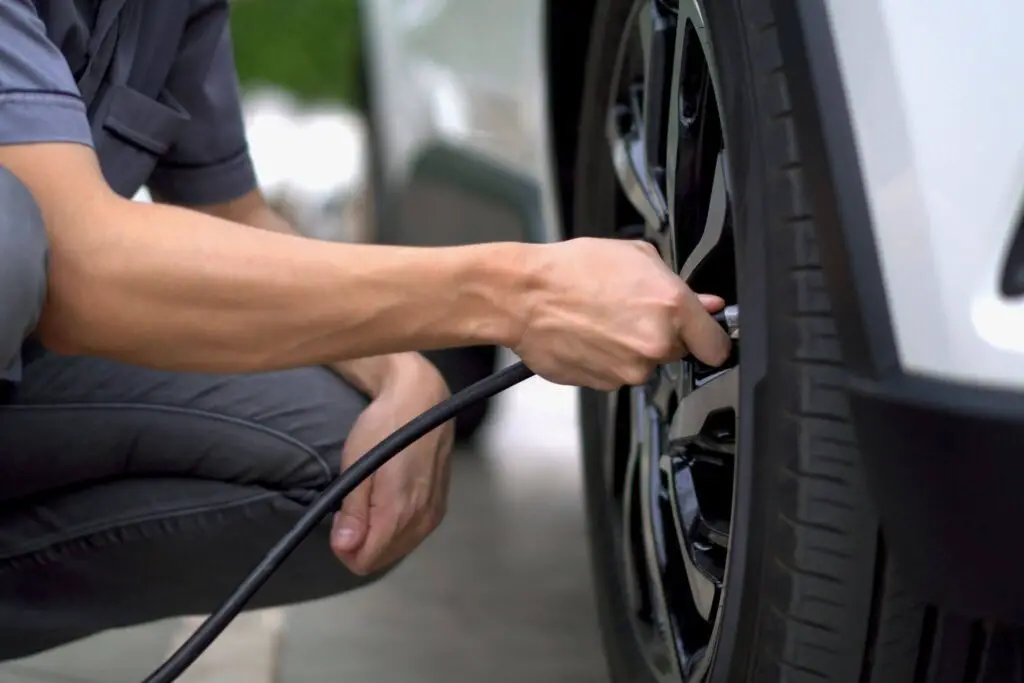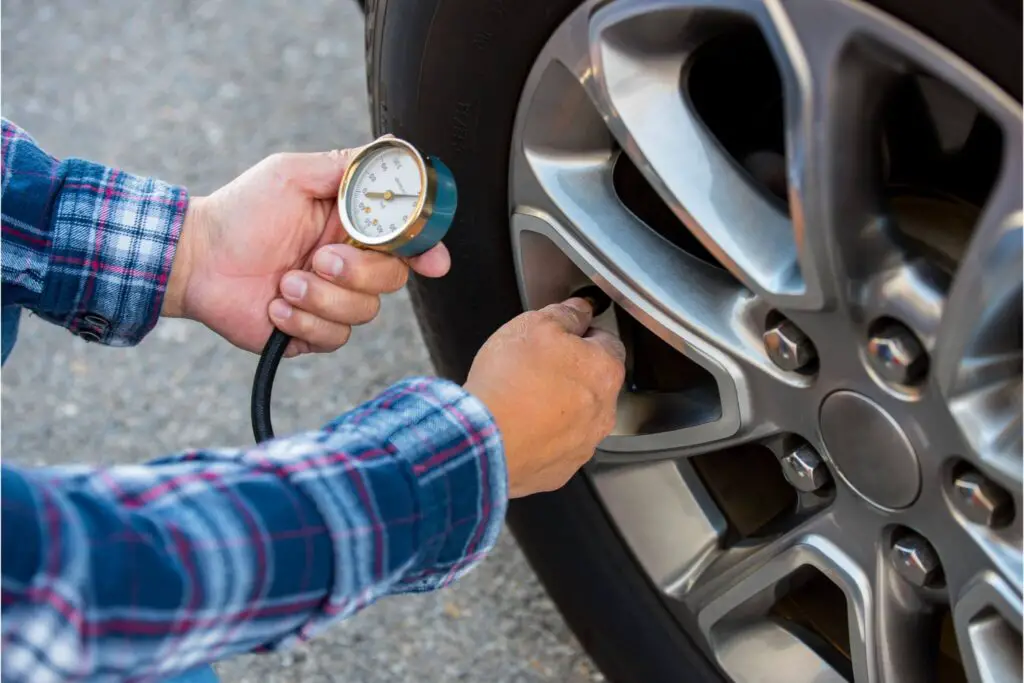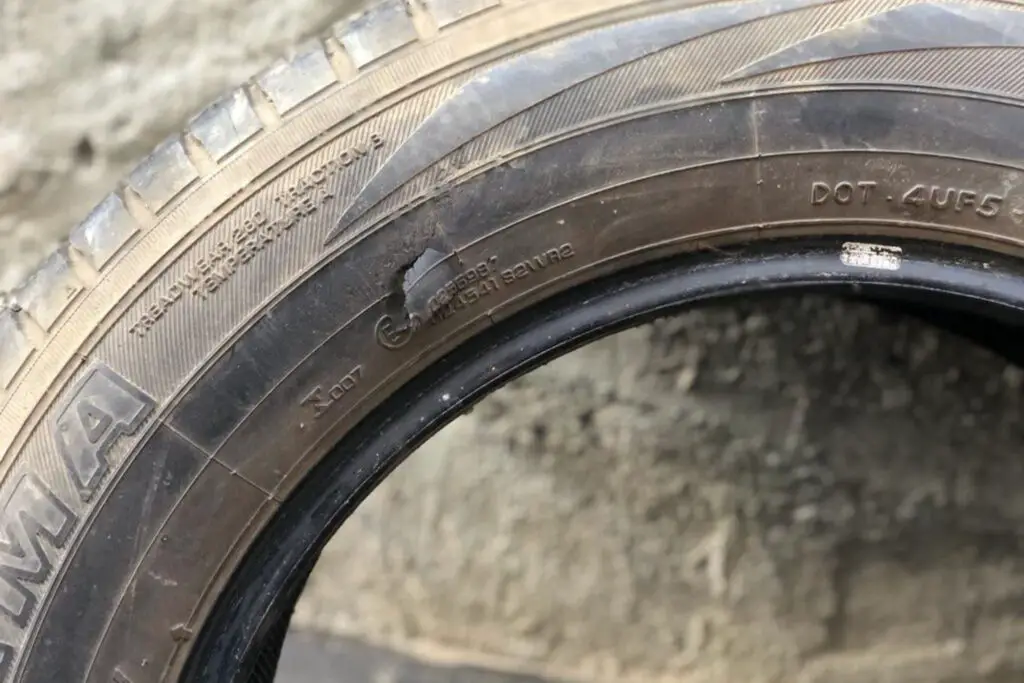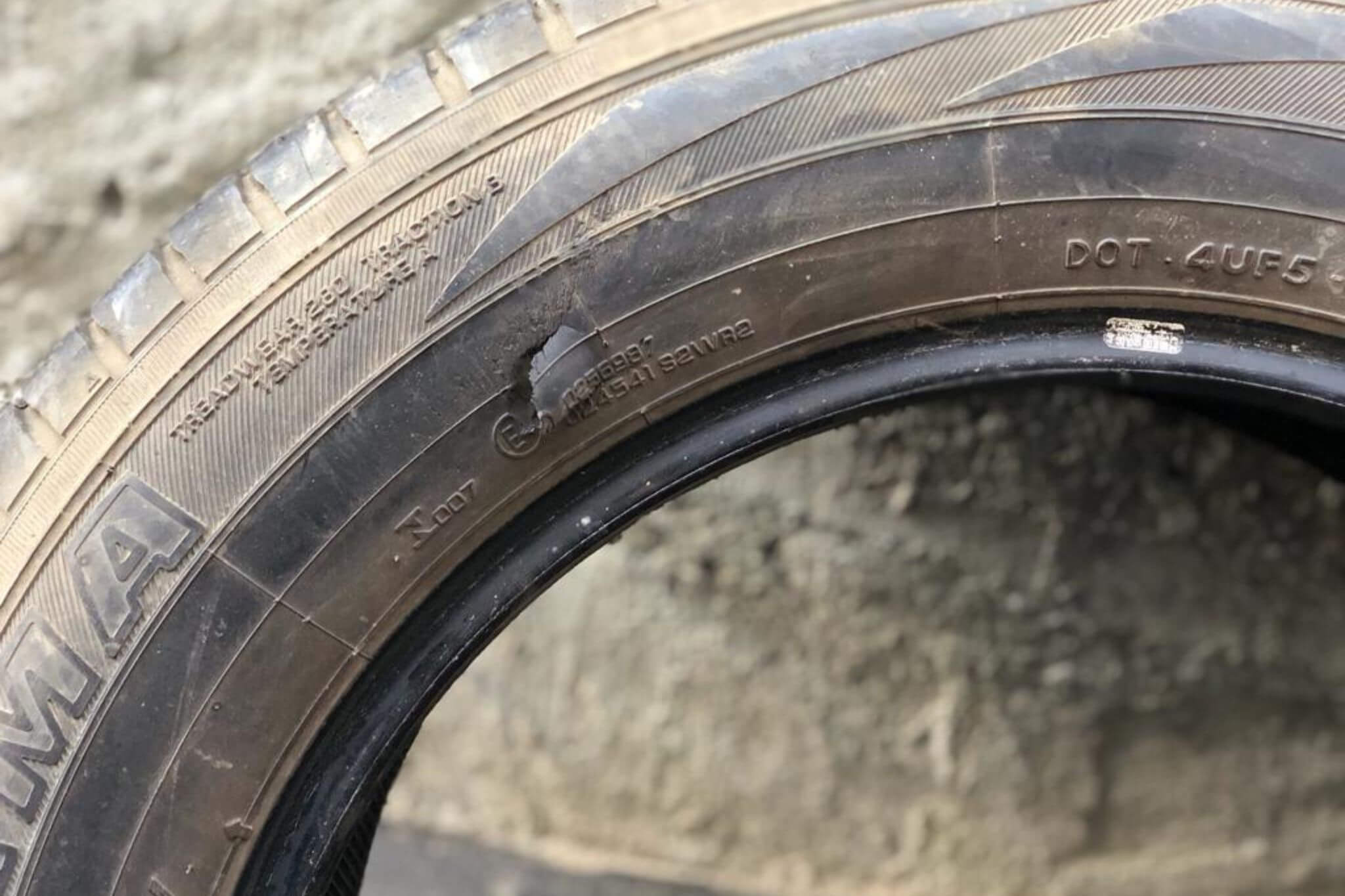What two things pop into your mind when you think of a car? You probably guessed it right—the body and the tires.
When you look at the wheel, you are quick to notice the tire’s rims and sidewall. Speaking of the sidewall, some of you may wonder where this part is and what it does.
Well, true to its name, it is the part between the tread and bead that forms a kind of wall on the exterior and provides stability to the vehicle.
Therefore, any crack, tear, or puncture occasioned by this part is sidewall damage.
It can be caused by anything that causes the sidewall to perforate or rip, impairing its ability to act as a protective layer of the wheel and provide stability.
Caution should be taken if this part is damaged, and immediate action should be taken. One should either take out a spare tire or call a mechanic.
One should not drive knowingly with this damage because any weakness in this part may cause the tire to burst and cause an accident that may be catastrophic.
IN A HURRY??
In a hurry? Get Affordable Tires on Amazon fast, with our handpicked selection of top-rated products….
– Best Tires Overall – Michelin Tires
– Best for Durability – Good Year Tires
– Most Affordable – Cooper Tires
– Best for Run-Flat Tires – Bridgestone Tires
– Best for High-Performance – Pirelli Tires
Causes of sidewall damage
Tire sidewall damage: You may be wondering what causes this sidewall damage. A definite list does not exist, but the baseline is any activity or incident that can cause a sidewall puncture.
I have gathered a comprehensive list to alert all automobile owners to this severe problem. Below are some of these things;
1. Road hazards
One of the causes of this damage is driving over potholes or heavy debris. This reckless driving causes the sidewall to experience wear.
This leads to a breach in the wall’s durability and integrity, exposing it to damage.
Therefore, one should avoid driving through unworthy roads filled with potholes and driving at high speed on roads such as marram roads due to the high level of debris present.
2. Under or over inflation
If you are a driver, you know that tire pressure is one of the checkboxes that must be ticked before thinking of driving or cruising anywhere.


The average tire pressure is 32–35 psi. Anything above or below this may cause the tire to burst or get a puncture, leaving one at risk of an accident.
3. Age and wear
Nothing lasts forever, and the tire is no exception.
A good tire can last up to three to five years and cover over five thousand miles when well maintained.
However, it is subject to wear and tear and should be replaced after this period to avoid bursts and punctures causing sidewall damage.
4. Improper storage
Tires should be stored in a cool place away from heat sources and direct sunlight.
Excessive heat causes the tire tubes to bulge, resulting in sidewall damage.
They should also be cleaned, but not with corrosive substances such as petroleum products.
Types of Tire Sidewall Damage
| Types of Sidewall Damage | Description |
|---|---|
| Cuts | A visible slice or cut on the sidewall |
| Cracks | Small or large cracks in the rubber |
| Bulges | An abnormal protrusion from the tire sidewall |
| Punctures | Small holes or punctures in the sidewall |
| Impact damage | Damage from hitting an object or curb |
Signs of Tire Sidewall Damage
A good driver is an observant driver. Some signs may warn you of the possibility of sidewall damage to your tire before it is too late.
The presence of leakage in air pressure is one of them.
If you keep experiencing the need to pump your tires more often, see a mechanic as soon as possible, for this may be occasioned by sidewall damage from activities such as driving through potholes.
Punctures or sidewall cuts and bulges in the tire are another sign.
This may be due to sharp objects, driving over curbs, and too much direct heat.
Talking of heat, this may also cause “dry rot,” which is the cracking of tires, causing them to weather prematurely and being another indicator for sidewall damage.
Signs of Tire Sidewall Damage
| Sign of Sidewall Damage | Description |
|---|---|
| Visible cuts or slices | Obvious damage to the tire sidewall |
| Bulges or protrusions | An abnormal bump or bulge in the tire sidewall |
| Cracks | Small or large cracks in the rubber |
| Punctures | Small holes or punctures in the sidewall |
| Uneven wear | Uneven wear patterns can indicate damage to the sidewall |
Consequences of Ignoring Tire Sidewall Damage
Sidewall damage is a disaster just waiting to happen. When noticed, one should take action immediately; otherwise, it would lead to further damage to the tire.
Continued ignorance leads to reduced tire life as they age faster due to cracks. This further leads to the risk of a tire blowout, which may be fatal at high speeds.
As stated earlier, one of the importance of the sidewall is the stability of the vehicle.
When sidewall damage is ignored, it leads to increasingly poor handling and stability, eventually leading to loss of control and an accident.
Prevention and Maintenance
Prevention is better than cure.
Therefore, taking care of your tires and driving carefully is the first step to ensuring the safety of your tires.
But how can you precisely ensure the maintenance of your tires?
The first step to taking care of your tires is to check the tire pressure of your wheels regularly.


It would help if you had a tire pressure gauge to do this and always ensure the results fall within 32-35 psi. Simultaneously regularly use a tread depth gauge and ensure your tread depth reads 32/32 inches.
The second step is storing tires away from direct sunlight, which causes blisters to the tire, heat, and chemicals whitehat corrode the tire, and all are perpetrators of sidewall damage.
Another critical step is to permanently change the tires every 5000–7000 miles or 3-5 years to maintain the durability and integrity of the tire, reducing the risk of sidewall damage.
Driving carefully means driving on road-worthy roads, under the speed limit, and avoiding hitting potholes and debris, reducing the risk of punctures to the sidewall.
How to Address Tire Sidewall Damage


Sidewall damage is more common than you may think; therefore, it is necessary to arm yourself with the dos and don’ts of the situation.
It all depends on the degree of damage to the tire’s sidewall. If the problem is minor, patching or plugging may be a quick solution.
However, this should be the last resort if you are still looking for a replacement. Otherwise, any damage to the sidewall should result in the change of that tire as a precautionary measure.
If the damage is severe, the tire must be replaced immediately, and patching is no longer an option. This is the case also if, on analysis, the damage is found to be too close to the sidewall.
Conclusion – Tire Sidewall Damage
In conclusion, one should always check their tires for any defects before any drive, regardless of the distance.
Regular inspections by a professional are also recommended, for it may be tricky to identify this sidewall damage.
Once you have identified this defect, immediately replace the tire or call a professional for advice on its severity before embarking on your journey.
Now you know what to do and what type of action to take. Please follow them to ensure your safety and of other road users.
Moreover, this increases the life span of your car and saves you a fortune that would have been spent on repair. Information is power; stay safe.
This post contains affiliate links. Read the full disclosure here.


I am passionate about all things automotive and have a deep understanding of the topic. As a mechanic, I use my free time to share knowledge of everyday challenges that any car owner can experience – helping you make informed decisions about tires.

